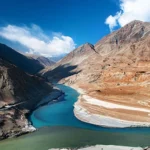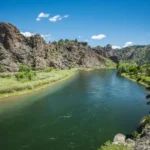
Cuyahoga Valley National Park is the only national park in Ohio. It was established in 1974 as the Cuyahoga Valley National Recreation Area and covers 33,000 acres of rural landscape. It was re-designated a national park in 2000 and is now managed by the National Park Service. The park itself is located between Cleveland and Akron, Ohio, along the Cuyahoga River. Every year, over two million people visit the park to hike, cycle, camp, sled, go bird watching, sight-seeing, and even attend concerts.
Since the 1870s, the region has been a popular tourist destination.
When park districts were established in the 1910s, it began to be developed as a park.
Hayward Kendall, a Cleveland businessman, donated 430 acres of land to the park in 1929. He also established a trust fund for the state of Ohio.
Because of the public’s desire to preserve the valley, President Gerald Ford established Cuyahoga National Recreation Area in 1974 and signed the bill into law.
The park purchased a 47-acre dump in 1985. Following a thorough investigation, it was determined that the dump was extremely toxic, and the area was closed down. Lawsuits were filed against GM, Ford, Chrysler, 3M, and Waste Management.
The cleanup of the site began in 1987 and is still ongoing as they attempt to return it to its natural wetlands.
The Richfield Coliseum, a former arena, was demolished in 1999 and is now part of Cuyahoga Valley National Park. It is now a popular bird-watching meadow.
The park is free to enter, but there are some special events that visitors can attend for a fee.
The Ohio and Erie Canal, a 308-mile-long waterway dug by hand, runs through the park. The majority of the employees were Irish and German immigrants.
Cuyahoga Valley National Park is home to at least 20 reptile species, including skinks (lizards), turtles, and snakes.
Cuyahoga Valley National Park is home to 105 bird species, and the park has been visited by 250 different bird species.
The park contains 43 different species of fish.
The park contains a variety of trees, including maple, hickory, spruce, pine, oak, and beech, as well as 943 known plant species.
Although forest is the park’s dominant landscape, it also contains wetlands, meadows, floodplains, valleys, ravines, trails, and the canal.
Cuyahoga is a Mohawk word that translates as “crooked river.”
A passenger train runs through the park, following the Towpath Trail. Mules were used in the early days to tow boats loaded with goods and people along the canal. Towing the boats down the canal waterway, the mules walked along the path.
The park does not have any drive-to campsites, but there are five campsites where cyclists and hikers can pitch a tent and stay overnight.
Although fishing is permitted in the river, catch-and-release is encouraged. People are discouraged from eating the fish they catch because of the river’s poor water quality.








